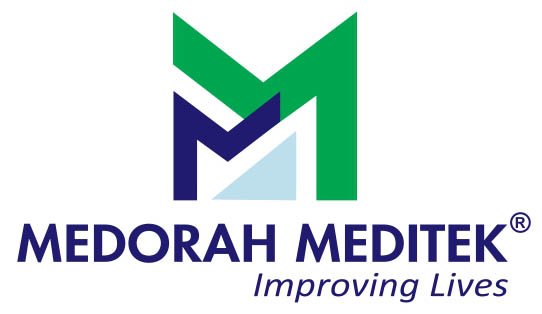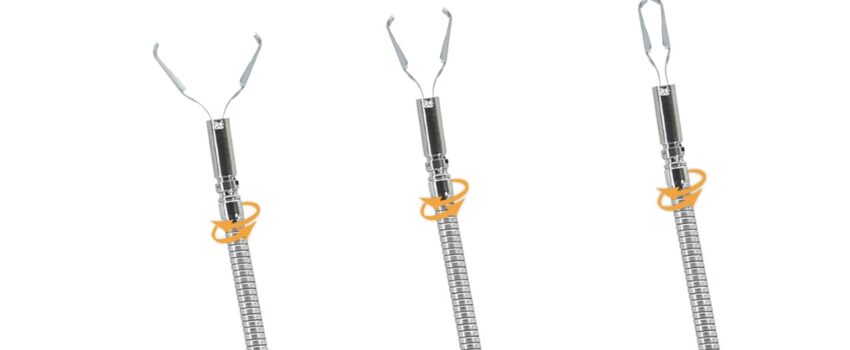An endoclip is a mechanical, metallic device used in the procedure of medical endoscopy to close two mucosal surfaces without the need for suturing or surgery. The hemoclip is a type of endoclip and is a malleable metal clip used to ligate small blood vessels during surgery and also to mark the location of body structures in radiographic procedures.
The function of endoclip is like that of a suture in gross surgical applications, as it is used to join together two disjointed surfaces but can be applied via the channel of an endoscope under direct visualization.
Endoclips have been found to be useful in treating gastro-intestinal bleeding (both in lower and upper tracts). It is also useful in preventing bleeding after therapeutic procedures like closing gastro-intestinal perforations as well as polypectomy.
There exists in the market, endoclips of various sizes and shapes, such as two and three prong devices. These can be administered using reloadable and single use systems and may or may not open and shut for facilitating placement.
The endoclip was first described by Kudoh and Hayashi in 1975 and referred to as “staunch clip”. Initially, the applicator system of the clip limited the efforts to incorporate clips into applications in endoscopy.
But in 1988, a superior and easier applicator delivery system was developed, including a functional, reloadable endoclip system. This was made of a stainless steel clip, fitted with a metal deployment device, enclosed in a plastic sheath.
Endoclips that are used today come in several shapes and sizes, different from the original. Clips with 2 and 3 prongs are used for various applications. Technicians have also designed rotatable clips to enhance localization of deployment. Also, clips which close and open have also been developed which facilitate suitable location of deployment.
When endoscopy identifies a treatable lesion, an endoclip may be inserted via the endoscope channel till sheathed clip is visible on the endoscopic image and the handle is given to the nurse assistant. The clip is then unsheathed by retraction at the handle, kept in position and triggered by the nurse for treating the lesion.
Applications of Endoclips
- Gastro-intestinal bleeding:
Endoclips are used primarily to stop bleeding ( hemostasis) during surgery of the gastro-intestinal tract. Many bleeding lesions have been clipped with success, whatever is their nature. For instance bleeding peptic ulcers need endoscopic treatment in case it manifests active bleeding.
- Other applications
Endoclips have found an application in stopping bleeding during complex endoscopic procedures. For instance, to prevent post- polypectomy bleeding, prophylactic clipping of the base of a polyp has been found to be helpful.
Clips can be used also for closing gastro-intestinal perforations, which may have been caused by complex therapeutic endoscopy procedures like polypectomy. Clips have also been used for securing placement of endoscopic feeding tubes.
Endoscopic hemoclip treatment for bleeding peptic ulcers is a safe and effective modality. It has a high initial hemostatic rate (95%) and low re-bleeding rate (8%).
Hemoclip products suppliers are developing new types of clips and also clip application devices. Thus the endoscopic hemoclip treatment has become more efficient and easy.

